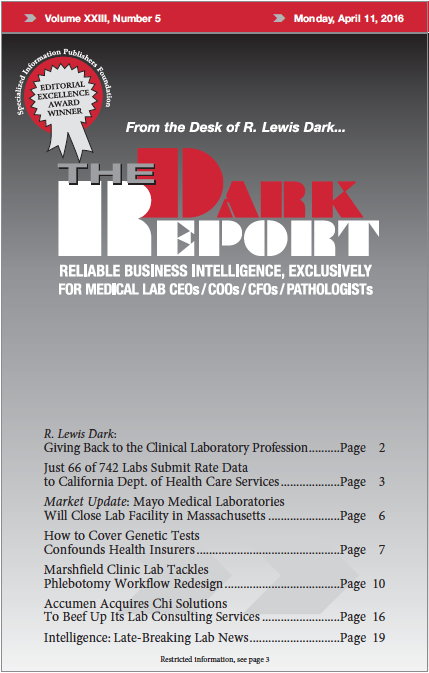CEO SUMMARY: Before a redesign of phlebotomy workflow at Marshfield Clinic, patients might wait as long as an hour, particularly before noon when phlebotomists would see 75% of each day’s patients. After the redesign, the number of draw sites was reduced from five to two while handling an increase in daily patient volume from 700 to 855. Patient wait times fell …
Marshfield Clinic Lab Tackles Phlebotomy Workflow Redesign Read More »
To access this post, you must purchase The Dark Report.


